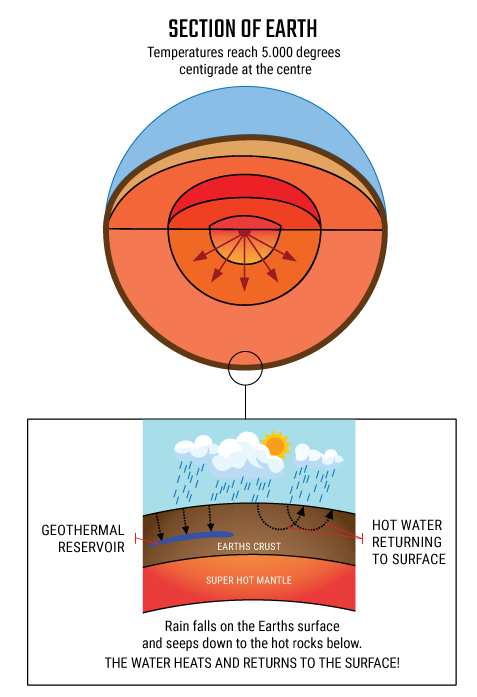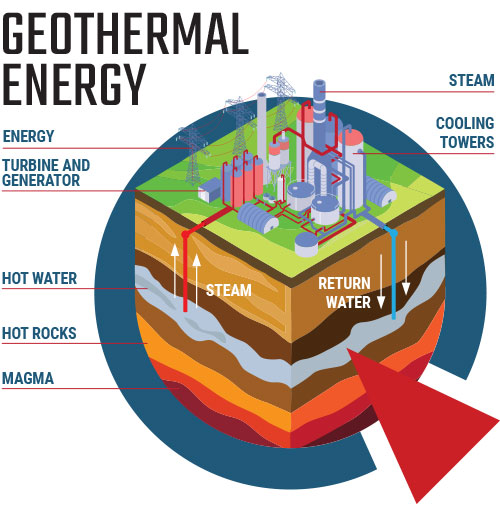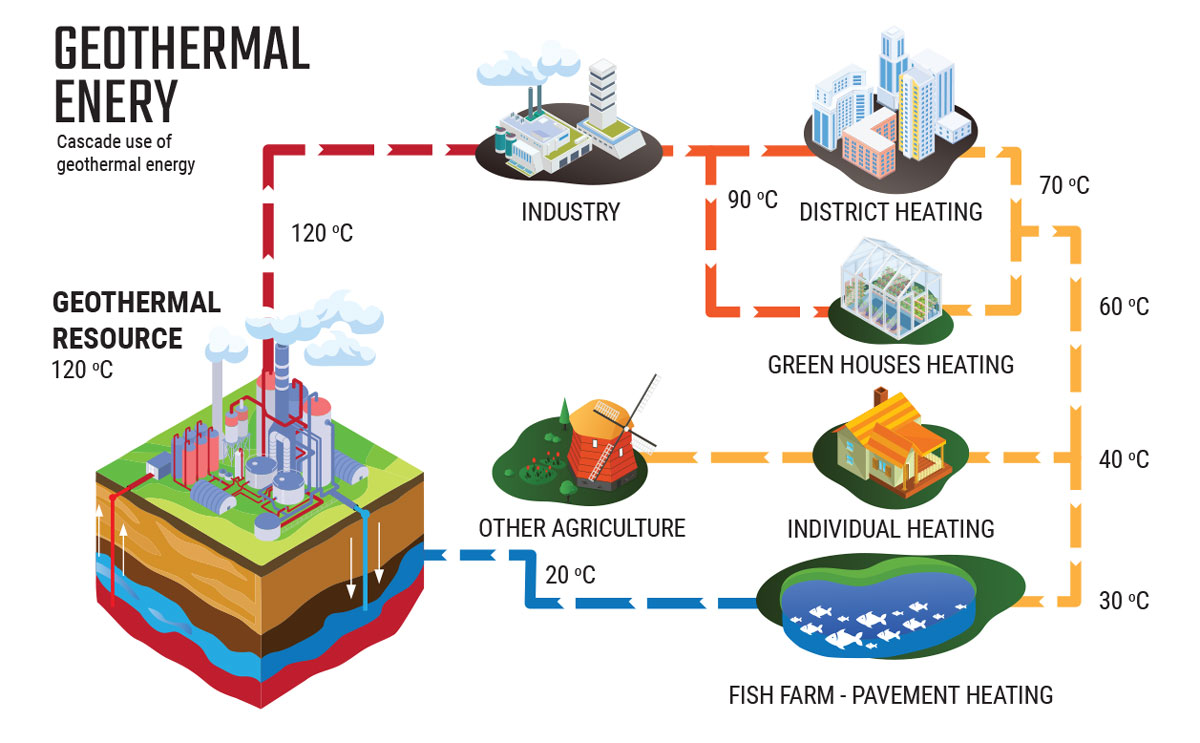What is Geothermal energy
Geo means “earth,”
and thermal means “heat”
and thermal means “heat”
Geothermal energy is heat that is generated within the Earth.
Download technical [.PDF]
It is a renewable resource that can be harvested for human use.
WHAT IS GEOTHERMAL?
The earth's core lies almost 6.500 km beneath the earth's surface. The double-layered core is made up of very hot molten iron surrounding a solid iron center. Estimates of the temperature of the core range from 2.700 to 6.000 °C Heat is continuously produced within the earth by the slow decay of radioactive particles that is natural in all rocks.
Surrounding the earth's core is the mantle, thought to be partly rock and partly magma. The mantle is about 3.000 km thick. The outermost layer of the earth, the insulating crust, is not one continuous sheet of rock, like the shell of an egg, but is broken into pieces called plates. These slabs of continents and ocean floor drift apart and push against each other at the rate of about one inch per year in a process called continental drift.
Magma (molten rock) may come quite close to the surface where the crust has been thinned, faulted, or fractured by plate tectonics. When this near-surface heat is transferred to water, a usable form of geothermal energy is created.

HOW WE USE ENERGY OF THE EARTH?
Geothermal energy can be utilised for electricity generation and for various other types of heat direct use applications.
Compared to other renewable energy technologies, geothermal is unique as it provides a base-load alternative to fossil fuels based electricity generation, but can also replace those used for heating purposes.
High temperature geothermal resources are most important for electricity generation (>150 °C), while medium-to-low temperature resources (<150 °C) are suited for many different types of applications utilizing heat for industrial applications.
Direct use applications utilising the heat of geothermal energy are e.g. for space heating be it for residential buildings, offices or greenhouses, for food production, such as food dehydration, heating swimming pools and booths and so much more.
GEOTHERMAL ENERGY APPLICATIONS
Hydrothermal electricity production:
- Wells drilled into a geothermal reservoir produce hot water and steam from a depth of up to 4 km
- The geothermal energy is converted at a power plant into electricity
- Hot water and steam are the carriers of the geothermal energy
Advanced geothermal systems
- New approaches have now seen increasing interest, the most visible is the concept of using deep closed-loop systems to extract heat from the ground.
- Instead of drilling for water, or creating an artificial reservoir through stimulation (EGS), either a single well or multiple connecting well in a closed-loop approach are collecting the heat beneath the surface at depth.
- The overall concept is to utilise geothermal energy without the risk of finding sufficient water resources.
Hot Dry Rock/Enhanced or Engineered Geothermal Systems (EGS):
- Extracts heat by creating a subsurface fracture system to which water can be added through injection wells
- Water is heated by contact with the rock and is pumped back to the surface through production wells
- Energy is then converted at a power plant into electric energy as in a hydrothermal geothermal system or be used for heating applications


Direct Use:
- Applications that use hot water from geothermal resources directly
- Examples: space heating, crop & lumber drying, food preparation, fish farming, industrial processes etc.
- Historical traces back to ancient Roman times, e.g. for baths & spas
Geothermal heat pumps:
- Taking advantage of relatively constant earth temperatures as the source and sink of heat for both heating and cooling, as well as hot water provision.
- One of the most efficient heating and cooling systems available
- For heat pumps, resources with a temperature of up to 30 °C are used.
- Exploitation of geothermal energy for the needs of heat pumps is done using shallow wells or geothermal probes
 QUINCE M PRO
QUINCE M PRO